Oman - at last
Oman has been on our “places to visit while we are in Saudi” list for a long time, but we have never got around to going there. It is too close for a full holiday, and a weekend visit wouldn’t make it worthwhile. So this Founding Day long weekend was ideal for Oman. We booked 4 nights in an hotel overlooking the sea in Muscat, and flights with Oman Air. The intention was to relax together and do a little sightseeing.
The hotel turned out to be very nice indeed. Crowne Plaza was doing a deal in February, and it has a choice of 4* and 5* venues in the city. Whilst the 5* one was tempting, the location of the 4* was, in our estimation, far better with it being on a promontory at the end of a long beach, whereas the 5* one was inland. And it was as good as the pictures promised, a nice room and excellent breakfasts.

View from the hotel
It turned out that our hotel was at the right end of the city for the interesting things to see. The modern Muscat city and airport occupy a low lying plain between the mountains and the Gulf of Oman along a 25km strip. Most of the industry, commerce and housing are in this area. The hotel was at the eastern extremity of the beach and behind us the mountains came down to the sea and the geography became challenging. We found that the original Muscat town and port were now the suburb of Mutrah, a few km further east and surrounded by mountains. Just beyond the port was the next cove of Al Bustan where the State Council (Parliament) and National Museum were to be found. The Mutrah area was fascinating, a proper fishing port, so unlike any sea front I have found in KSA. And right on the sea front/corniche was the old city souk which was a real warren of retail and culinary delights. This was the sort of place where we could – and did – mosey around for a few hours browsing and drinking tea and nibbling on local samosas. Whilst there were a few tourists about, and a couple of the shops with corniche frontage sold souvenirs, the rest of the place was a genuine living vibrant market. I have been in a quite a few souks in north Africa and the Middle East and this one is my firm favourite: interesting, complex, genuine, not too dirty and very little hassle from the merchants.
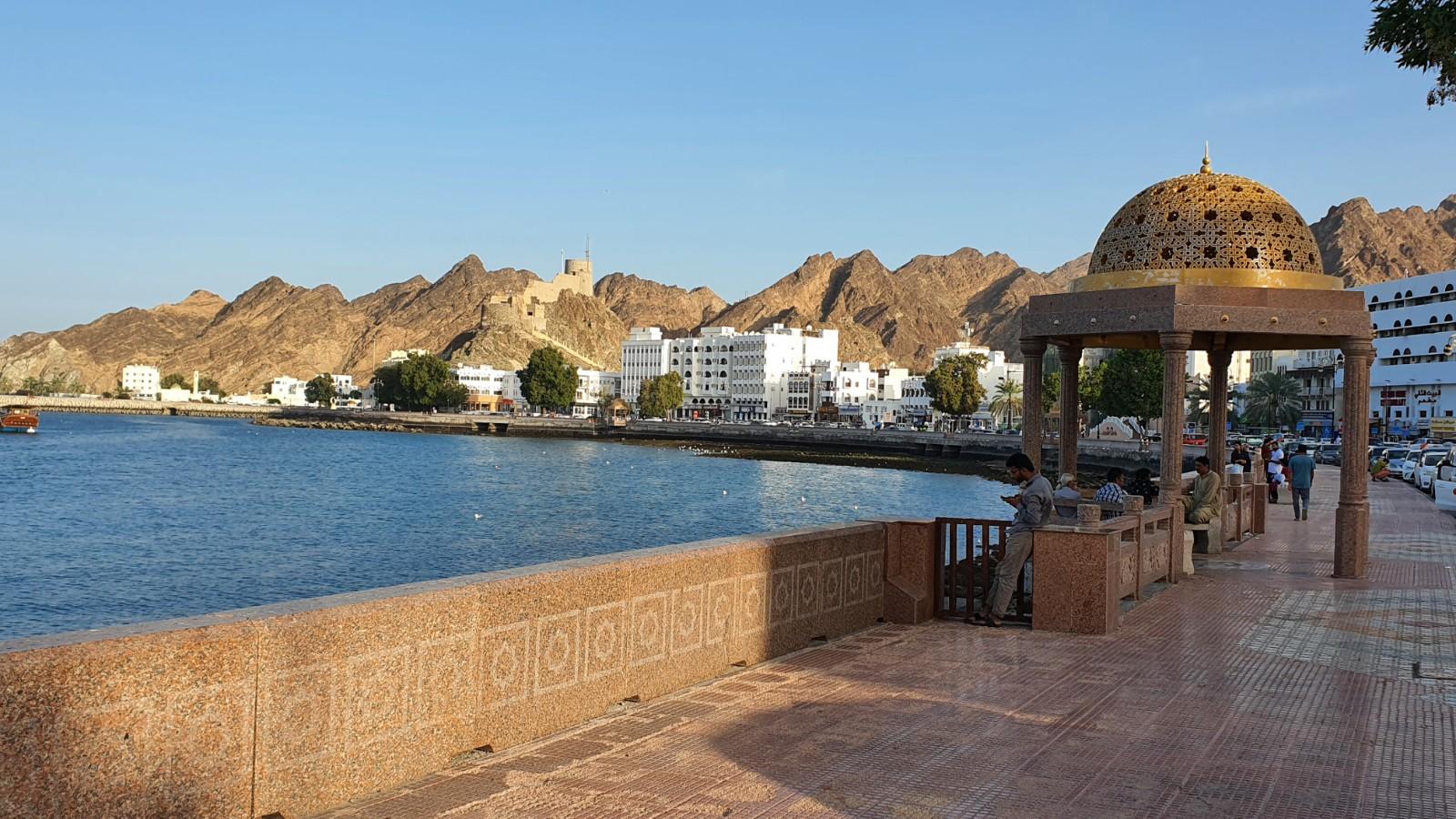
Mutrah seafront
At the end of the bay at Mutrah is an unusual monument on a small hill - an incense burner in Riyam Park. There was no information on display as to what it was for, so I had to resort to online sources. Apparently its a monument to commemorate Oman's National Day, which is 18th November, built for the 20th such anniversary therefore about 1990.
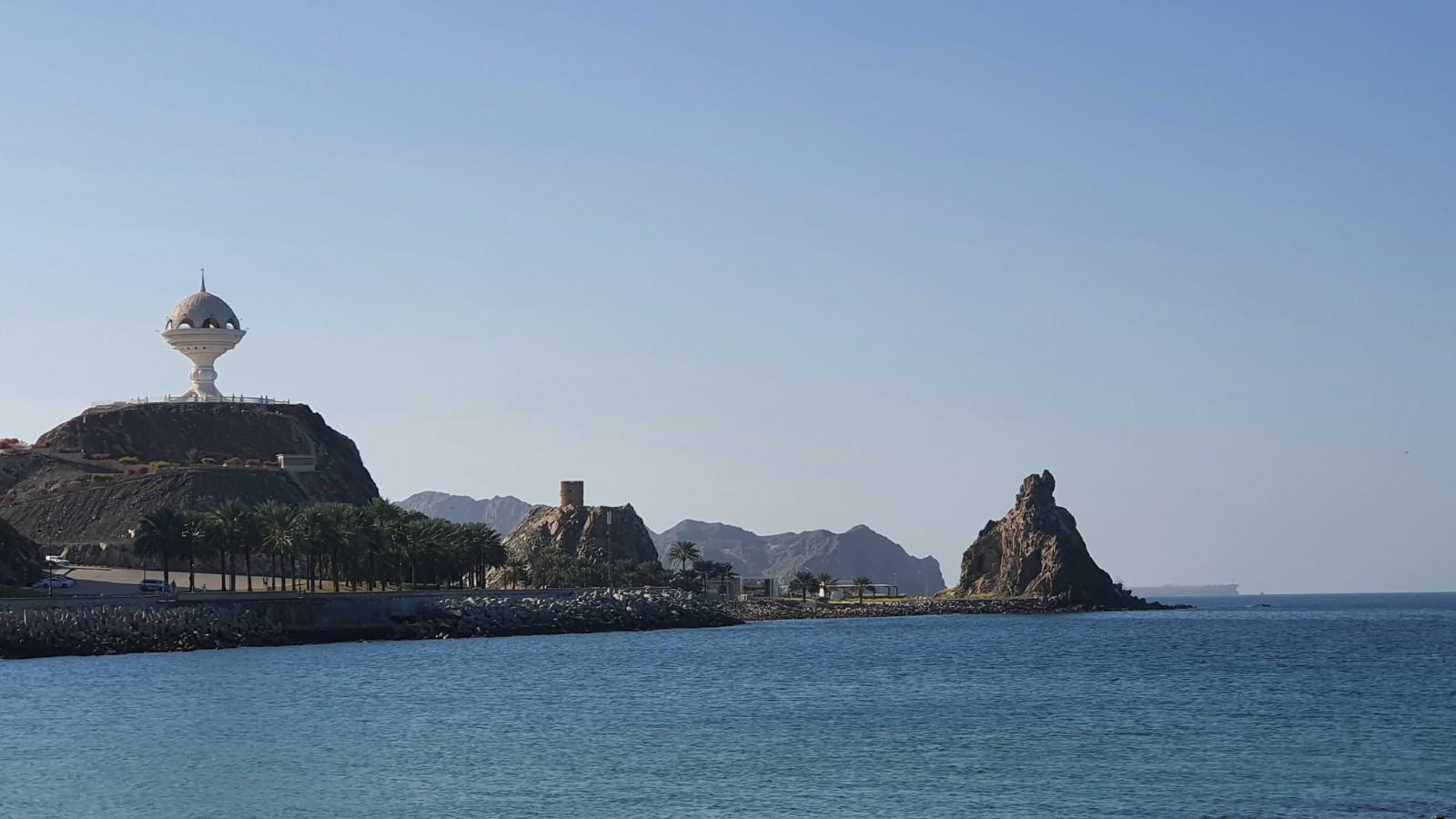
Incense burner monument at Riyam Park
We had rented a car and did one day trip out of the Muscat area, going down the east coast as far as Tiwi. The objectives were threefold: to see some of the countryside, to visit the Bimmah sinkhole, and to see the Wadi Shoab which had been recommended to us.
The sinkhole was an extraordinary place, a collapsed section of ground about 50m across, and not quite round in diameter, more egg-shaped if seen from above. The depth to water level is around 25m. There are steps leading down from the edge which is otherwise walled-off for safety, and at the bottom a rocky area at one edge and a very deep body of water which undercuts some of the cliff-edges.
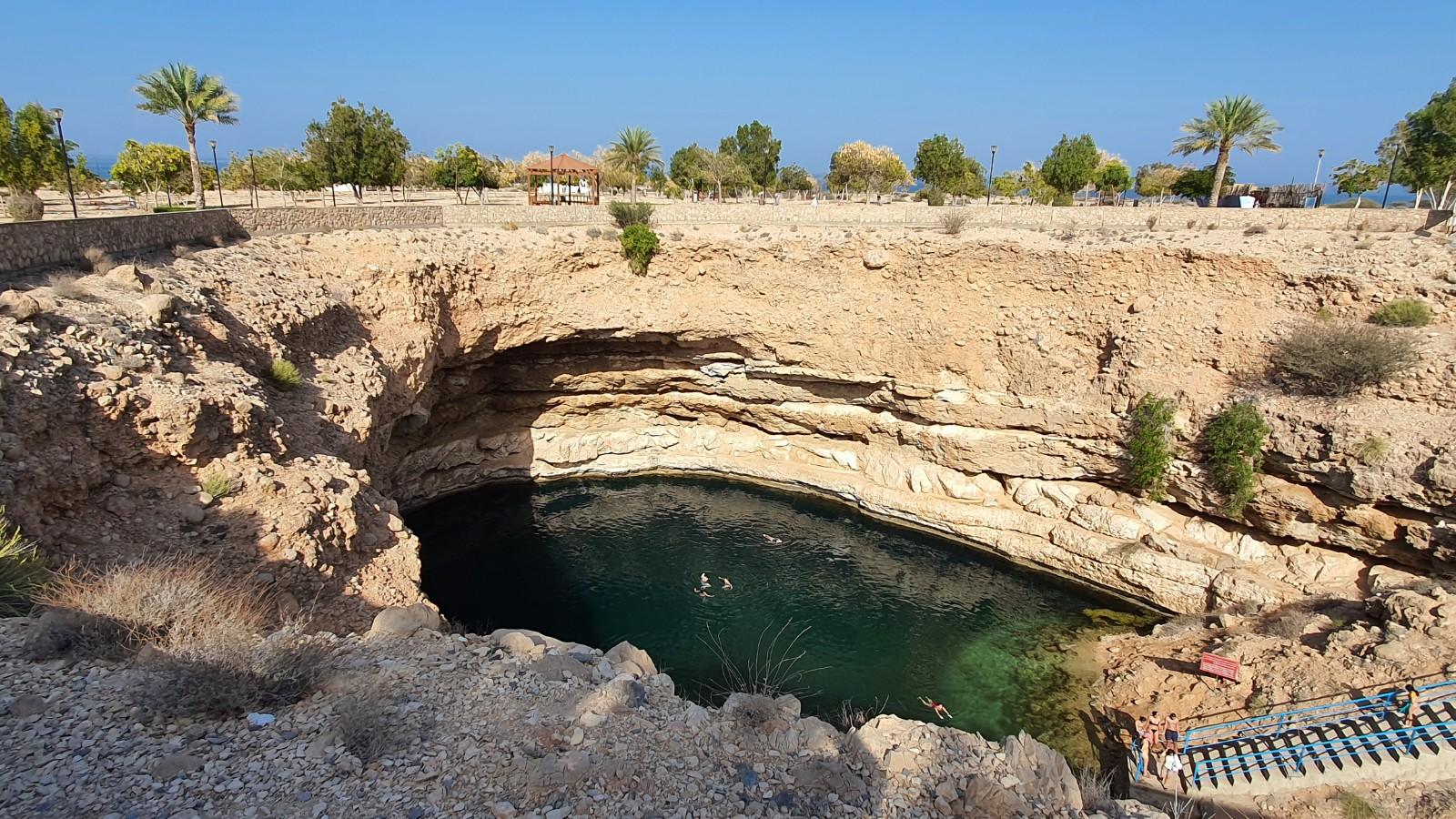
Bimmah sinkhole
Although the sinkhole is only 500m from the sea, the water is fresh (I tasted it) which suggests that there is an underground stream feeding it and draining away under the cliff face somewhere. I’m not a geologist but I guess that the stream had scoured a sandstone plug in an otherwise hard rock area which had then collapsed and been eroded over time. The Arabic name there is Hawiyyat Najm which apparently translates as “the deep well of the falling star”, suggesting that earlier people believed it was the result of a meteorite strike. The Omani authorities have realised its interest and tourist potential, and have set up a park around the sinkhole. There is an entry gate with (free) parking and (free) entry and (free) well kept toilets. Around the hole there are planted gardens and shrubberies and picnic areas. The only thing that could be improved is by providing a changing room for bathers, but I’m sure the toilets which are 250m away could be used instead. This was a really nice and unspoiled spot, and the weather on a late February day was just perfect, sunny and about 25 deg. C. When we were there, there were about 30 others in the area and I can imagine that it would get busy in the warmer months and at weekends.
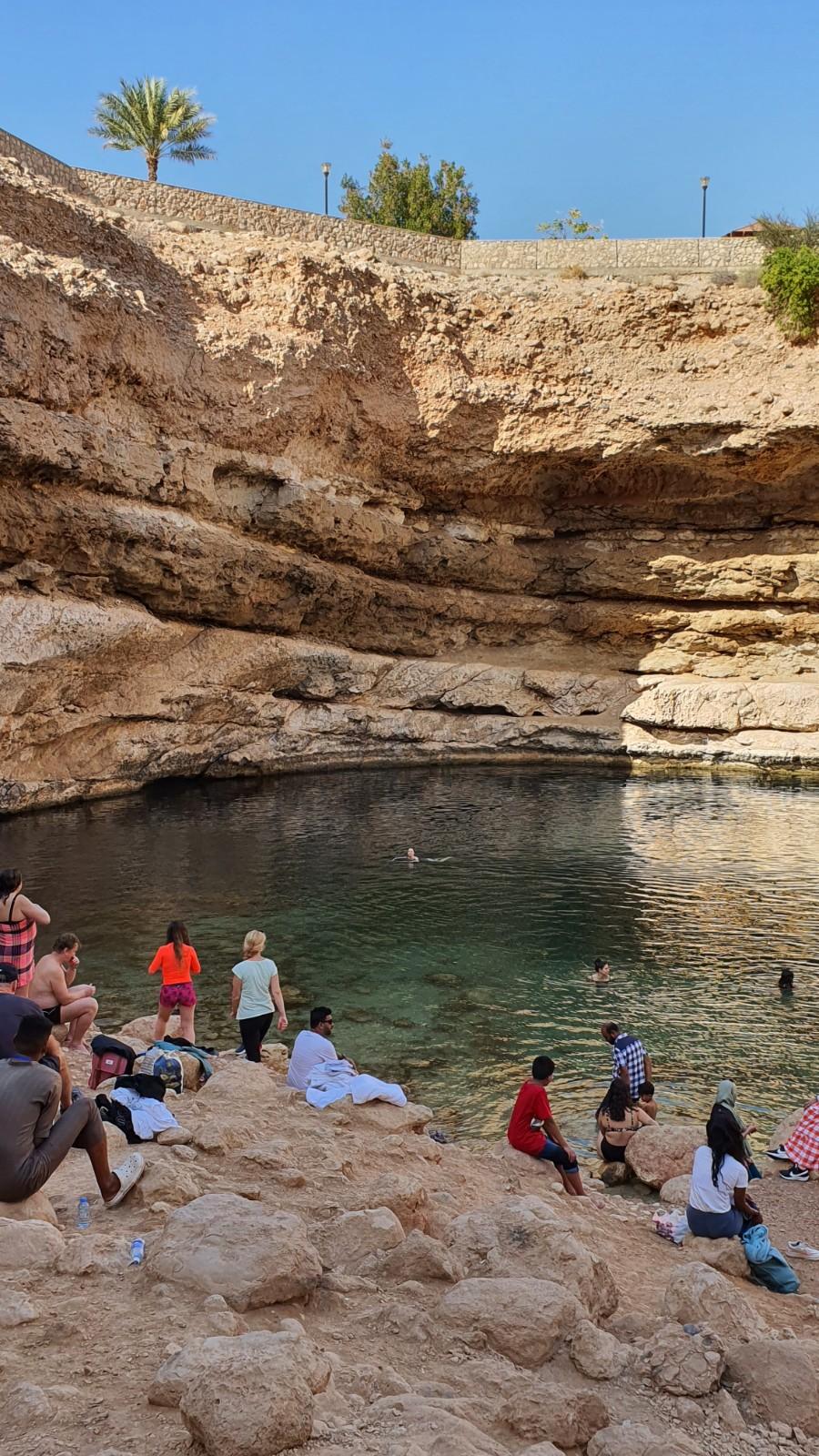
Tourists and swimmers in the sinkhole
There is nothing like it in the UK, and if there was it would likely run by the National Trust and entry would be £10 or thereabouts. In researching for this blog post I did look online to see if there were any similar sinkholes in KSA, and was surprised to find one near Al Kharj, a city some 100km south of Riyadh. A closer look showed this to be completely closed off to the public though.
Farther south from Bimmah is the coastal town of Tiwi from where the Wadi Shoab cuts back into the mountains. From internet photos this looked to be a lovely place to visit, a narrow ravine with picturesque pools and hiking trails. We arrived at the (free) parking place and found a tearoom. Here was the start of the trail into the ravine. To access it, we had to pay a local boatman 1 Omani Riyal (10 Saudi Riyals / £2) to cross the river to the start of the trail. We spoke to a South African tourist who had just disembarked from the boat having returned from the ravine and she explained there was a lot of walking and steep climbs to be undertaken to get to the nice places. As it was late in the afternoon we decided not to go any further and instead went for plan B which was to go a few kms further south and drive into the slightly less photogenic ravine of Wadi Tiwi but which had the advantage of having a road running up it. The road was rudimentary with some very steep sections and hairpin bends, and after a few kms travelling we were well up in the ravine and past a couple of Omani hamlets where existence seemed to be through goat herding and donkey-keeping. It was so remote and quiet that it was easy to forget we were just a few kms from the coast. We had a short walk but didn’t go far from the car as it was not in a secure location. A lovely day out.
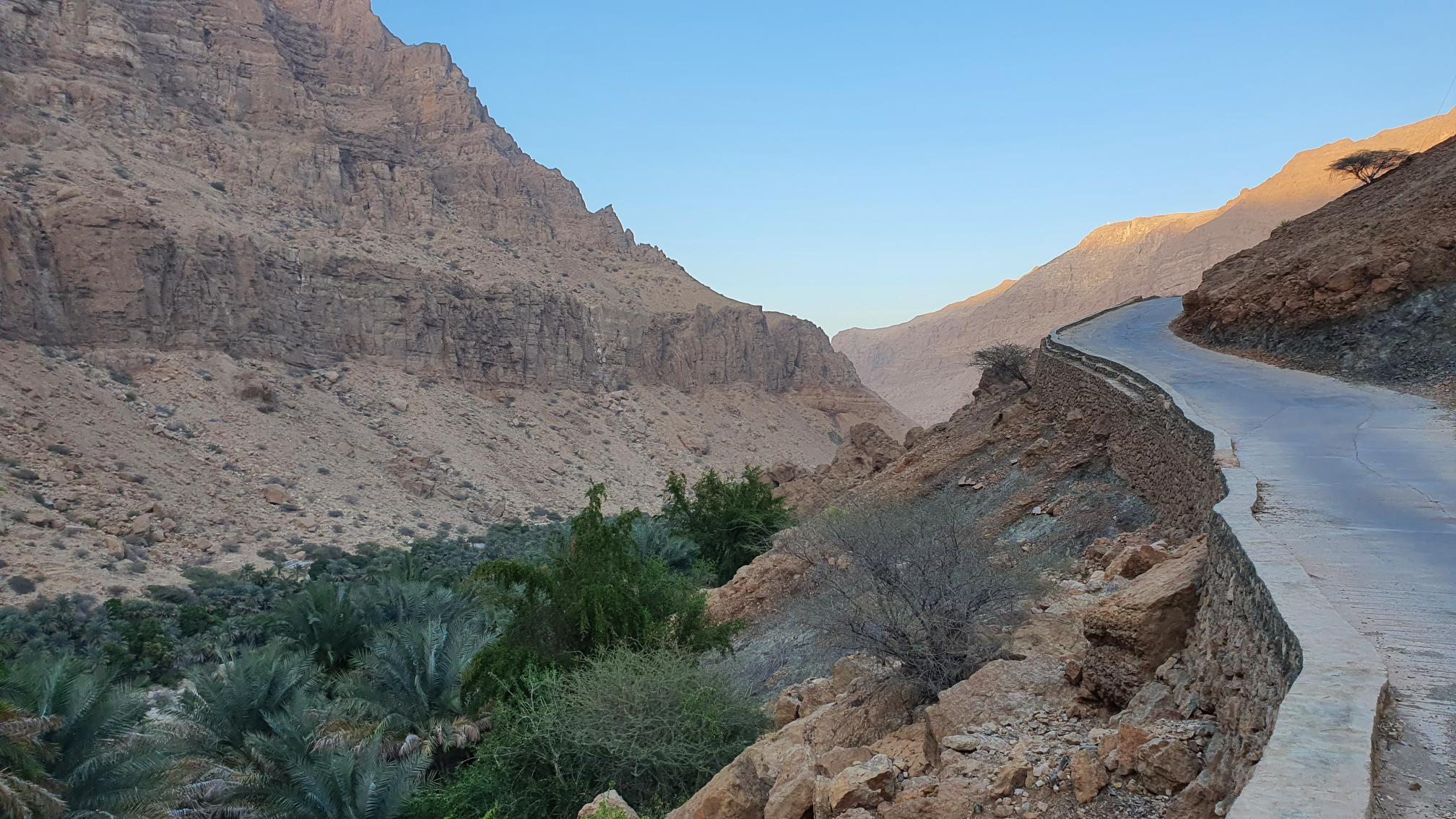
Wadi Tiwi
(Modern) Muscat city is a well-mannered and clean place. Traffic is calm and there is hardly any litter about. Compared to Riyadh it is a haven of orderliness. The locals we encountered seemed to be genuinely helpful, but fewer people spoke English than in KSA. The number of ex-pats seemed lower than what we have in Riyadh, the country seems to be more reliant on its own labour force, and the dominant blue-collar workers are Indian. There are fewer western fast-food joints in Muscat than I had expected to find, a couple of MacDonalds and the ubiquitous Starbucks, but few other big brands, which was refreshing to find.
One of my yardsticks for judging a country is by looking at the quality of the banknotes. Oman has a colourful range of clean crisp notes, and this reflected the society that we found.
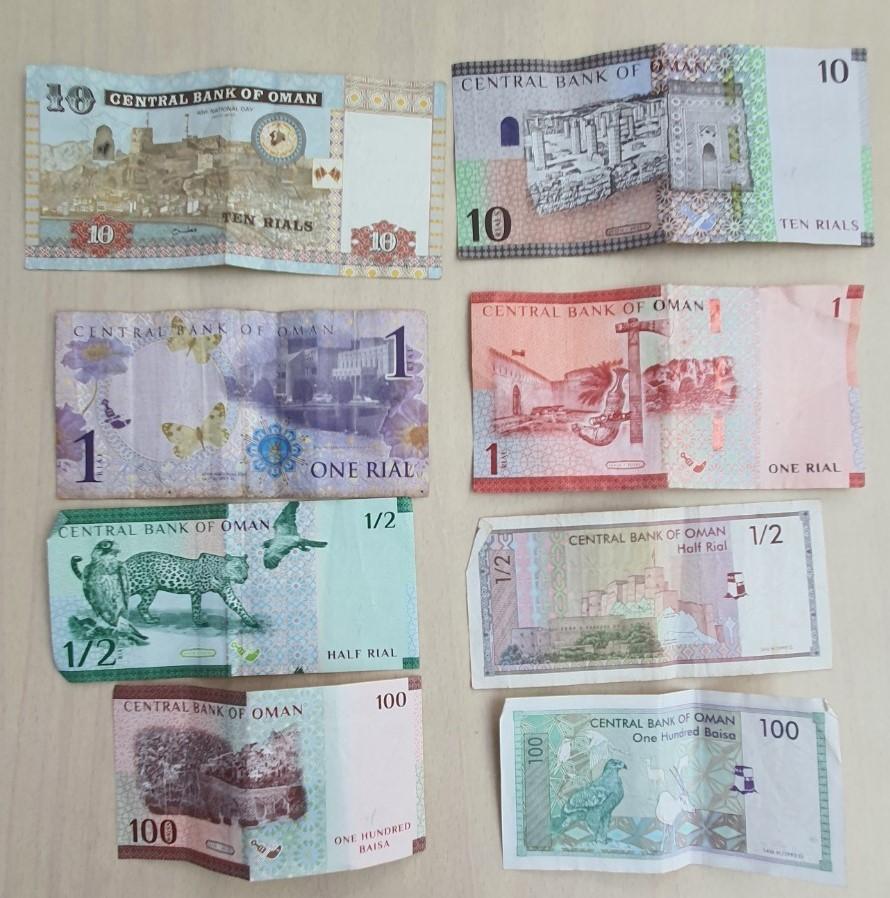
Looks like there is a currency transition in progress? Nice colourful notes.
Would I go back? Yes, definitely, I preferred it to the other Arabian Gulf countries I have been to (KUW, BAH, QAT and UAE). When my niece from Scotland visited us last year she announced that she was on a mission to see as much of the world as possible. She counted her countries and is on 30+. I wasn’t counting until then, and I am not trying to be one of the handful of people who have been to over 200 countries, but Oman was a minor milestone being no.50 for me.
